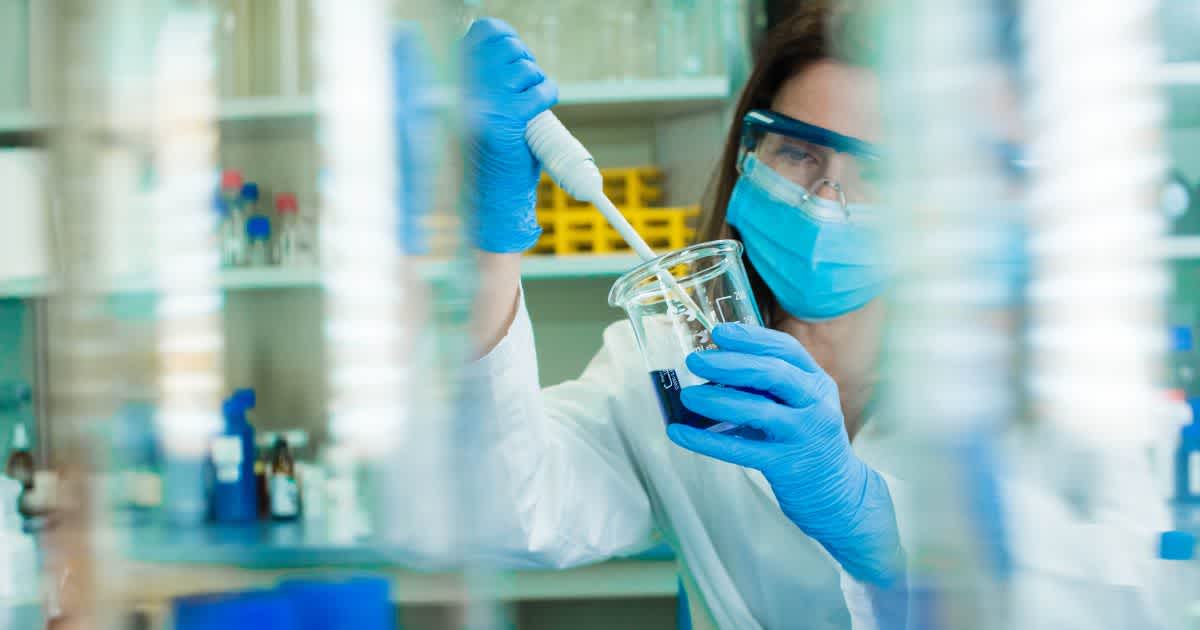Table of Contents
- What you need to know about the REACH-Regulation
- What is the REACH-Regulation?
- 7 Obligations connected with REACH
- Challenges of the REACH-Directive
- Opportunities of the chemicals law
- New developments: PFAS ban from 2025
- How to prepare for the PFAS ban
- Why REACH-certification is important
- How Line Up supports you in REACH-compliance
- Line Up for REACH!
The REACH regulation for chemical substances
Reading Time: 7 min.

What you need to know about the REACH-Regulation
The REACH-regulation affects all chemical substances and the entire supply chain - from manufacturers and importers to logistics and procurement companies. What is behind the EU chemicals legislation? And how can the associated requirements be fulfilled?
What is the REACH-Regulation?
The REACH-Regulation (Registration, Evaluation, Authorisation and Restriction of Chemicals) is an EU-regulation that has been in force since 1 June 2007. Its aim is to protect human health and the environment from potential risks caused by chemicals. At the same time, it is intended to promote innovation and the competitiveness of the European chemical industry.
The REACH-Directive applies to all industrial chemicals and is based on the precautionary principle: all manufacturers, importers and downstream users must ensure that the substances they manufacture, place on the market or use do not adversely affect human health or the environment. The regulation not only covers chemicals used in industrial processes, but also those found in everyday products such as paints, cleaning agents, clothing, furniture and electrical appliances.
7 Obligations connected with REACH
1. identification and documentation
Companies must determine the hazardous properties of chemicals and natural substances, such as toxicity, carcinogenic effects or environmental hazards, and document the results as part of a registration.
2. obligation to register
All substances that are manufactured or imported in quantities of more than one tonne per company per year must be registered.
3. recording in products
The use of chemicals as a component of products must be documented and information provided on their safe use.
4. authorisation procedure
Particularly hazardous substances may only be used with prior authorisation.
5. observe restrictions
Certain hazardous substances may be banned or their use restricted.
6. provide information
Manufacturers and importers are obliged to provide information on hazardous properties and safe uses of the substances.
7. safety analyses
Commercial users must carry out their own safety analyses if they deviate from the recommendations of manufacturers or importers.
Challenges of the REACH-Directive
One of the biggest challenges of the REACH Directive is the high level of effort involved in registering and documenting chemicals. Such additional processes are complex and cost-intensive, especially for smaller companies.
Non-compliance with the requirements also harbours considerable legal risks: Those who do not fulfill the requirements must expect severe fines or even a ban on market access. Furthermore, the regulation requires continuous adaptation to new regulations. The companies concerned must therefore always stay up to date and optimise their internal processes accordingly.
Opportunities of the chemicals law
However, the EU Chemicals Law also offers numerous opportunities to position yourself on the market and gain competitive advantages. For example, by increasing product safety or ensuring that products are safer for both consumers and the environment. As a result, confidence in the products and the company itself increases.
In addition, compliance with the REACH-regulations is often a basic prerequisite for gaining access to European and international markets in the first place. Furthermore, REACH encourages innovation by motivating companies to look for safe and environmentally friendly alternatives, which contributes to the development of new, sustainable products.
New developments: PFAS ban from 2025
One of the most recent changes under the REACH-regulation is the planned ban on PFAS (per- and polyfluoroalkyl substances) in the EU from 2025 - a measure with far-reaching consequences. These substances, which are known for their water, grease and dirt-repellent properties, can be found in numerous products such as textiles, fire extinguishing foams and electronics. However, as ‘eternal chemicals’, they are extremely long-lasting and have a considerable impact on the environment and health.
Numerous studies also point to significant risks to health and the environment, which is why the EU is now introducing strict restrictions. Companies must therefore find alternatives to PFAS and reorganise their supply chains, which means additional effort in product development and testing.
How to prepare for the PFAS ban
Early analysis
Companies should check their products and processes for the use of PFAS and other regulated substances at an early stage. This includes a detailed assessment of all materials and chemicals along the supply chain to identify potential risks and vulnerabilities.
Forcing collaboration
The search for suitable alternatives requires specialised knowledge. Collaboration with specialised service providers can help to identify safer and functionally equivalent substitutes that meet regulatory requirements.
Training of employees
Employees in relevant departments should be fully informed about the new PFAS ban regulations and their practical implications. Training can sharpen understanding of the requirements and help to ensure that implementation is more efficient.
Developing long-term strategies
In addition to short-term compliance with current regulations such as the REACH-directive and the PFAS ban, companies should establish long-term strategies in order to be prepared for future changes. This includes setting up processes to continuously monitor regulatory developments and adapt their own guidelines.
Why REACH-certification is important
REACH-certification is an important step in demonstrating compliance with the REACH-guidelines and strengthening the trust of customers and business partners.
It documents that a company has taken all the necessary steps to ensure the safety of its products and processes. Successful certification requires comprehensive documentation, the identification and evaluation of all chemicals used and the implementation of safe and legally compliant procedures.
Your advantage with REACH-certification: You benefit from increased market acceptance and can position yourself as a pioneer in terms of safety and sustainability. However, preparing for certification requires a detailed analysis and close collaboration with experts to ensure that all requirements are met.
How Line Up supports you in REACH-compliance
REACH-compliance requires extensive expertise and strategic planning in order to meet the diverse requirements. Line Up offers companies a wide range of consultancy services specifically designed to meet these challenges.
Analysing the supply chain: Identification of risks and optimisation of processes.
Support with registration: preparation and submission of the required documentation.
Training and audits: Imparting expertise and ensuring compliance.
Support with new restrictions: Proactive preparation for rule changes such as the PFAS ban.
Line Up for REACH!
The REACH-regulation is a challenge for many companies - but it also offers considerable opportunities that can be explored with Line Up. From safer products to sustainable innovation, you and your company can benefit in the long term if you take a strategic approach to the requirements.
Line Up is at your side as a reliable partner. Make your company fit for REACH! Let our experts advise you and secure a competitive advantage through REACH-compliance. Contact us now for a non-binding initial consultation!
Newsletter Registration
Sign up now for our free Line Up newsletter and stay up to date.





